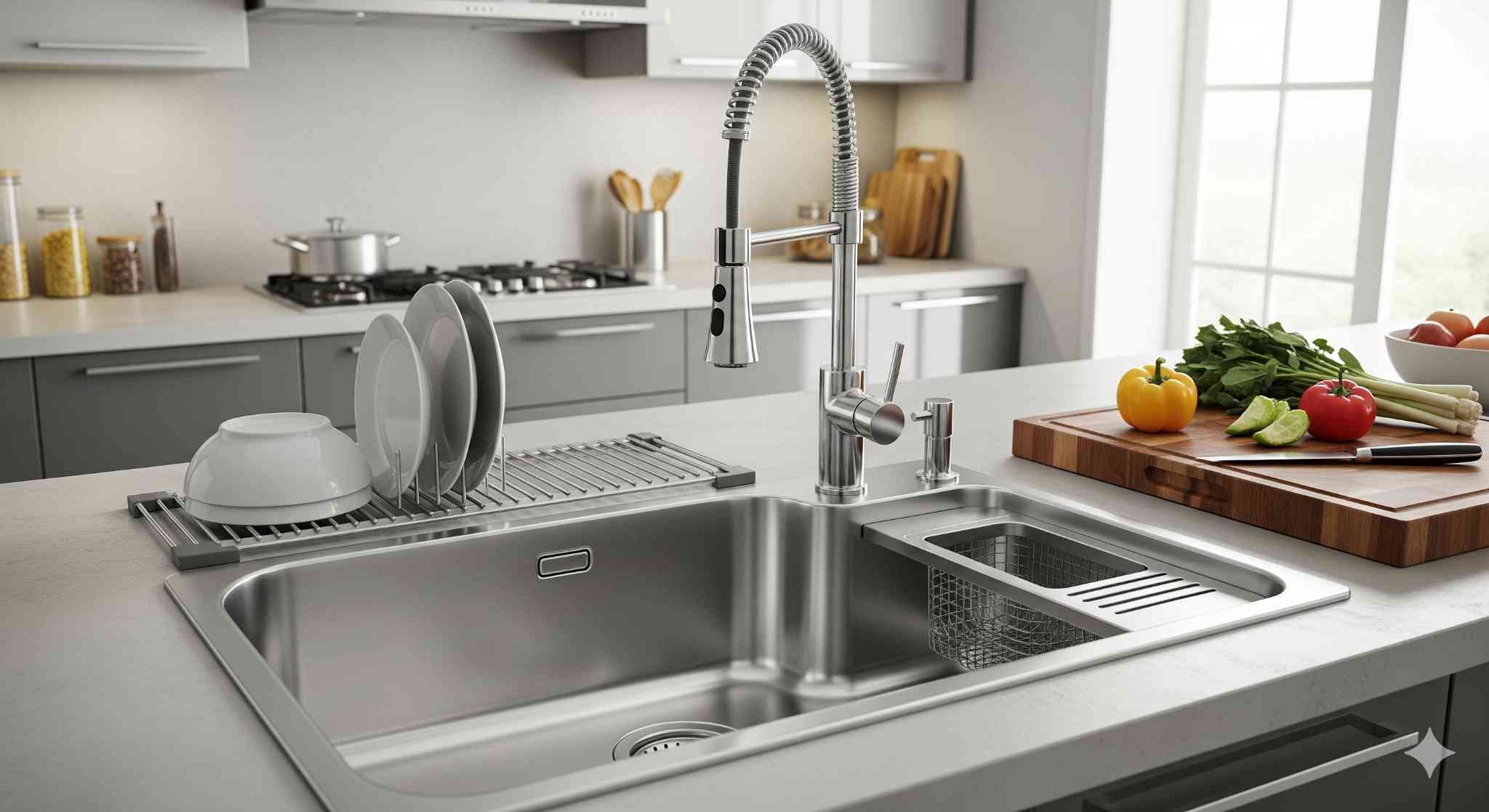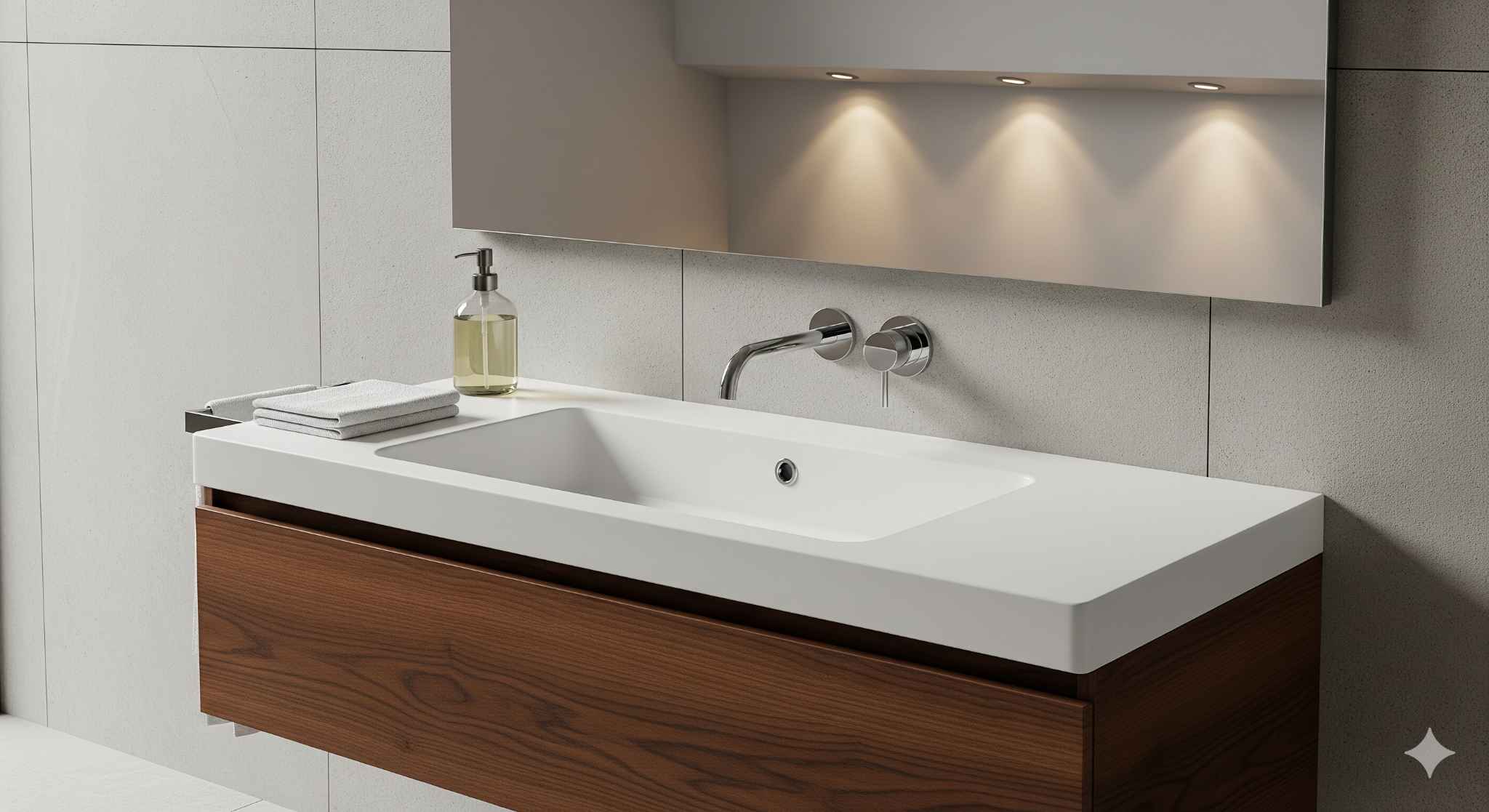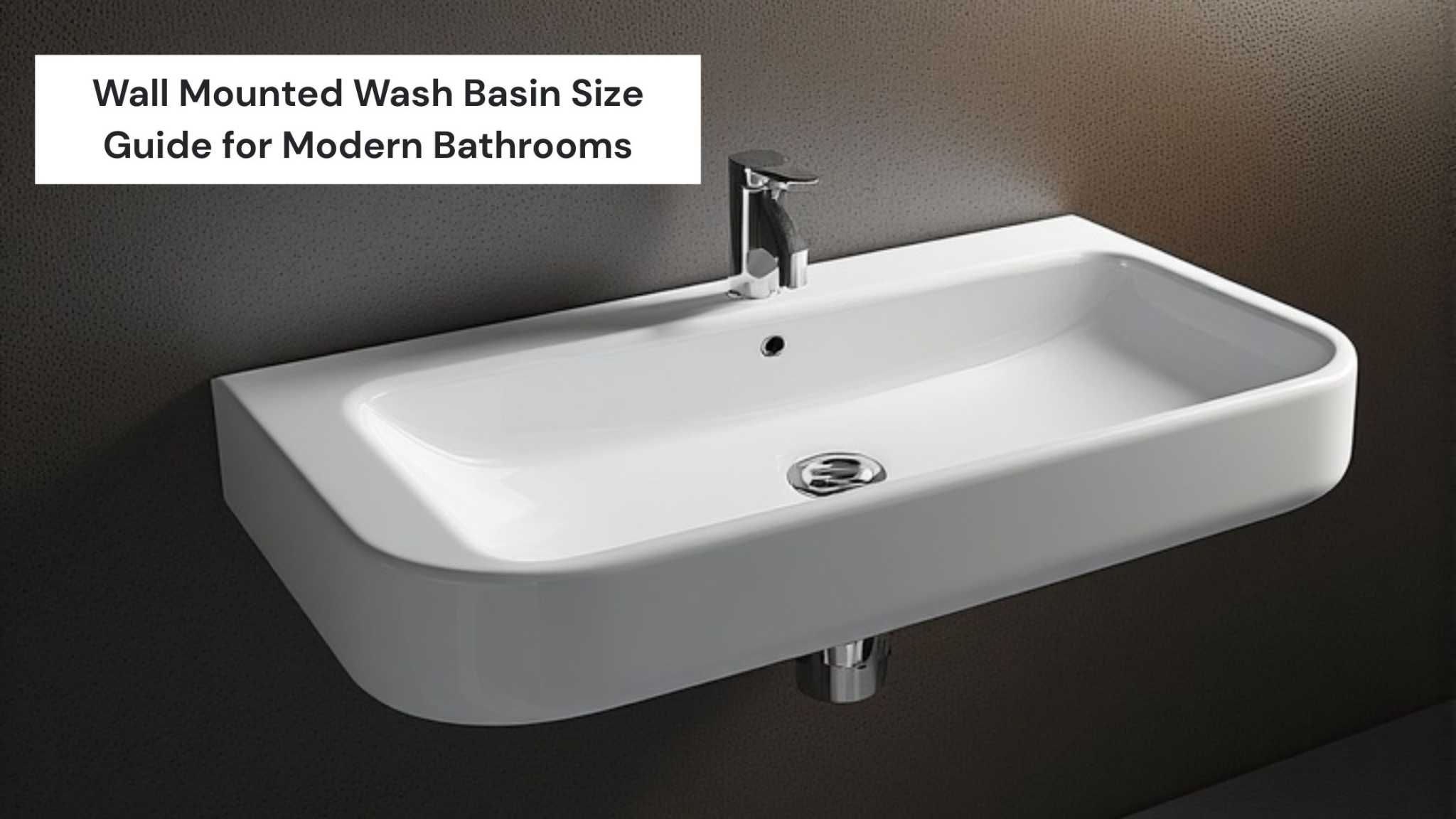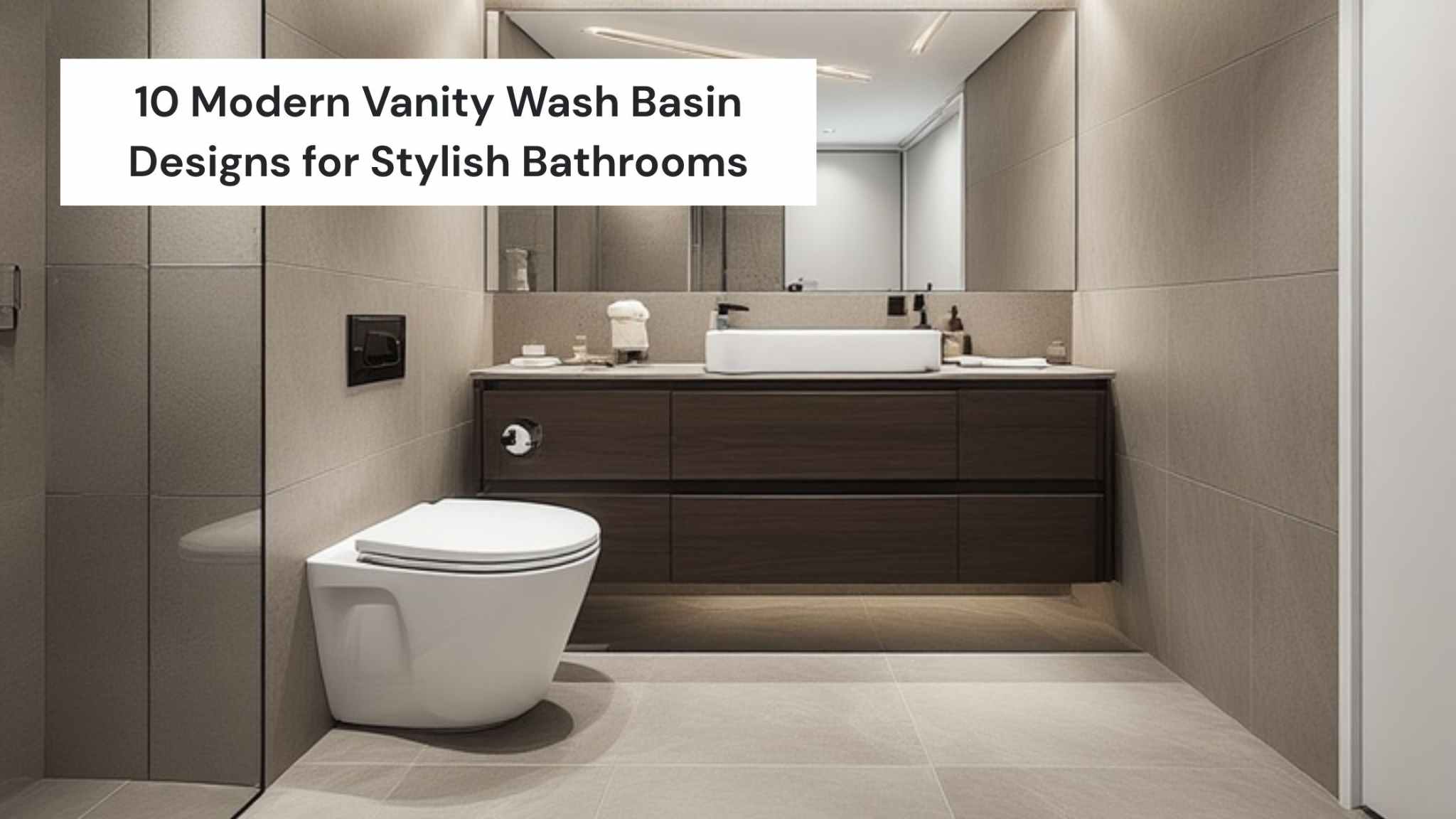What is the Difference Between Wash Basin and Sink ?

Many people confuse sinks and basins, but each serves a different purpose. Sinks are typically deeper and built for heavy-duty use, often in kitchens, while basins are designed for handwashing and grooming in bathrooms. Understanding the difference between sink and basin in terms of function, design, and materials helps you choose the right fixture for durability, style, and placement.
What Is a Sink?

A sink is usually larger, deeper, and built to handle more than just quick handwashing. It’s most common in kitchens, utility rooms, and service areas. Sinks come in different forms, from single-bowl options that suit small kitchens to large double-bowl sinks for homes where a lot of cooking happens daily.
Sinks need to be tough because they handle heavy pots, dishwashing, food prep, and sometimes even laundry. Materials like stainless steel, granite composite, and fireclay are popular choices. At Simpolo Tiles and Bathware, we often recommend sinks that match the surrounding tile and countertop finish for a seamless look.
You’ll often see inset sinks (mounted into the countertop) or undermount sinks (fitted below the surface for a smooth edge). Both styles work well in modern kitchens, and the right one depends on your cleaning habits and design preferences. Understanding the difference between wash basin and sink can also guide you in selecting the most suitable option for your space.
What Is a Basin?

A basin is found in bathrooms, powder rooms, dining rooms, or dressing areas. Smaller and shallower than sinks. In modern bathware, basins are designed more for personal hygiene.
Most basins are made from ceramic or porcelain. The reason is that they are easy to clean, come in different shapes, and the material doesn’t hold moisture, so bacteria don’t form on ceramics. Our wash basin designs range from timeless pedestal models to sleek countertop basins that act as a design statement in modern bathrooms.
We also offer handcrafted basins, like our Spring and Isola models. These blend artisanal style to uplift the general decor of the house. Whether wall-mounted for compact spaces or semi-recessed for narrow counters, basins allow flexibility in how you design your space. Knowing the difference between sink and basin ensures you select a piece that balances aesthetics with functionality.
Related Post : 7 Modern Washbasin Design Ideas for Living Room and Bathroom
Key Differences Between Sink and Basin
Here’s a quick comparison to help you see the difference between sink and wash basin clearly:
|
Feature |
Sink |
Basin |
|
Location and Usage |
Kitchens, utility rooms |
Bathrooms, powder rooms |
|
Size & Depth |
Larger and deeper |
Smaller and shallower |
|
Materials |
Stainless steel, granite composite, fireclay |
Ceramic, porcelain, glass, stone |
|
Installation Type |
Inset, undermount, farmhouse |
Wall-mounted, pedestal, countertop |
|
Primary Purpose |
Washing dishes, cleaning, and heavy use |
Handwashing, face washing, personal care |
Are Basins and Sinks Interchangeable?
While both deal with water, they’re designed for different purposes. Using a basin in place of a sink in your kitchen will make it very inefficient, as it will not serve the main purpose of a kitchen sink.
Likewise, installing a deep kitchen sink in your bathroom will look out of place and occupy unnecessary space. Moreover, bathroom basins are ideally ceramic to keep them odour-free from bacterial buildup. The sink vs basin choice is about function first, then design.
Also Read: 10 Best Modular Kitchen Tile Designs to Enhance Your Cooking Experience
Popular Sink & Basin Styles
When choosing a sink, the style can significantly influence both function and aesthetics.
- Single-bowl sinks suit smaller kitchens or light cooking needs.
- Double-bowl sinks allow multitasking, such as washing on one side and rinsing on the other.
- Corner sinks make the most of awkward layouts, maximising space.
- Inset or undermount sinks offer a clean, streamlined look and easy countertop cleaning.
For basins, there’s a wide variety to fit different spaces and styles:
- Wall-mounted basins save floor space and make cleaning easier.
- Pedestal basins deliver a classic, balanced appearance.
- Vessel basins sit on top of the counter, creating a striking focal point.
- Semi-recessed basins fit narrow counters while retaining bowl depth.
- Console basins blend open-leg frames with counter space.
- Corner basins are ideal for compact bathrooms.
Choosing the Right Fixture for Your Space
Selecting the right sink or basin starts with balancing function, style, and space. Whether it’s for a busy kitchen or a compact bathroom, understanding sink vs basin helps you make a choice that enhances both practicality and aesthetics.
- Functional needs – Decide how you’ll use it daily. Kitchens benefit from deep, spacious sinks for heavy-duty use, while bathrooms may prioritise style and convenience.
- Room placement – Consider where it will be installed and how it interacts with surrounding counters, cabinets, or tiles.
- Installation constraints – Check plumbing positions, counter size, and whether the design allows for inset, undermount, or wall-mounted installation.
- Durability & cleaning – Opt for sturdy materials like stainless steel, composite, or ceramic that can withstand wear and are easy to maintain.
- Aesthetic preferences – Match finishes and designs to your interior theme for a cohesive look.
Explore our curated range of kitchen sinks and designer basins to find the perfect fit for your space.
Related Post :Top 10 Stylish Wash Basin Cabinet Designs to Transform Your Spaces
Conclusion
The difference between basins and sinks comes down to size, purpose, and placement. Sinks are built for heavy-duty kitchen or utility work, while basins are designed for personal care in bathrooms and wash areas.
We at Simpolo Tiles and Bathware believe that the right fixture does more than serve a purpose; it adds to your home’s design and comfort. Whether you’re redoing a kitchen or upgrading a bathroom, our collection of wash basins — from pedestal to table-top wash basins and kitchen sinks blends performance with style for every kind of home.
FAQs on Wash Basin Vs Sink
What is the main difference between a sink and a basin?
A sink is larger, deeper, and usually found in kitchens for heavy cleaning tasks. A basin is smaller, shallower, and designed for bathrooms or personal hygiene.
Can I use a sink instead of a basin?
Not ideally. A kitchen sink in a bathroom will be too deep and bulky. Similarly, a bathroom basin won’t be practical for dishwashing or kitchen work.
Which material is best for long-term use?
Stainless steel and granite composites are durable and resistant to damage, making them ideal for sinks. Ceramic and porcelain are durable, easy to clean, and do not allow bacterial buildup even if they are not deep-cleaned, and hence, are used for basins.
Where should I install a basin in a small space?
Wall-mounted or corner basins work best. They save floor space and make the room feel more open without losing usability.
Are vessel basins practical?
Yes, if you want a stylish look and have enough counter space. They work well in guest bathrooms or designer spaces where looks are as important as function.







